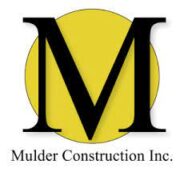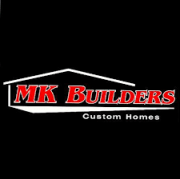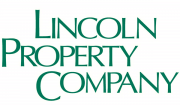Commercial roofs are nothing like residential ones: in fact, they’re as expansive, if not more expansive, than residential roofs when it comes to options, techniques, and maintenance. So we’re gonna have some fun today and talk about all things commercial roofing—and build an absolute how-to guide.
What is a Commercial Roofing System?
Commercial roofing protects commercial buildings like big box stores, strip malls, and apartment buildings, to name a few. Their functionality is the same as the roof on a house, but everything else from the materials used to the maintenance required is completely different.
While the roof over your house may be made up of asphalt shingles or other materials, commercial roofs are mainly covered using single-ply membrane, concrete, built-up roofing, modified bitumen, rubber, tar, and gravel, or others.
All these commercial roofing systems have their unique benefits, purpose, and maintenance requirements. Either way, we’re going to guide you through commercial roof installation, repair, and maintenance to ensure your commercial building stays protected and intact for years to come.
Types of Commercial Roofing Systems
There are dozens and dozens of different materials that one can use for a commercial roof, but we’ll cover the top 6 most commonly used types. They are super durable, and depending on how much commitment you want to make to maintenance and upkeep; some may be more suitable than others for your business.
Metal Roofing

Metal roofing is a common material used for residential and commercial buildings because of its long lifespan and durability. It can come in many different formats, shapes, sizes, and types of metal. For example, commercial structures might use galvanized steel, aluminum, metal tiles, copper, or even coated stainless steel. All of which are very strong and help to prevent damage and water leaks.
Metal roofing is fire resistant, can help reflect the sun’s rays, boost HVAC performance, and be treated or coated to prevent rusting and fading. Plus, they look super nice if you are looking for a more clean, modern look, and it’s also recyclable, making it the sustainable option.
BUR

BUR, or built-up roofing, is the usual tar and gravel roof cover you see on most commercial buildings. Its name indicates layers of material built up to make a strong, durable seal of protection on the flat roof. The more layers, the stronger a built-up roof can be.
These alternating layers lie between reinforced felt and bitumen and can be made of asphalt, tar, or cold-applied adhesives. These layers provide durability, prevent leaks, and make for better insulation of your building. So if you are looking for an equally durable and cost-effective choice, BUR is the one to go with.
EPDM

An Ethylene Propylene Diene Terpolymer (EPDM) system, or rubber roof, is best known for the rubber membrane that covers it that makes it resistant to UV rays. A roofing contractor with an EPDM roof membrane will save money on energy costs associated with heating and cooling the building because its waterproofing protects the insulation from the heat in the summer months and cold during the winter months.
PVC

PVC (polyvinyl chloride) has become an increasingly popular choice because of its low cost and wide availability. It’s also resistant to high winds, making it ideal for certain climates or regions.
Single Ply Membrane (TPO)

The single-ply membrane or TPO (thermoplastic polyolefin) roofing system is the most popular commercial roof material on this list. This is because it has a very low installation cost and can be installed over just about any type of surface, including flexible membranes, which makes it ideal for flat roofs.
Other benefits of TPO commercial roofing include
- strong air-welded seams
- resistance to high winds and fire
- ability to withstand large temperature shifts from very cold to very hot.
Green Roofs

Green roofs are becoming more and more popular, not just for residential buildings but also for commercial. They provide several benefits, including having some insulation qualities from the sun, which reduces HVAC costs and reduces rain runoff that can cause flooding downstream.
These green systems will vary in size depending on what type you choose to go with for your building. Still, they’re making a comeback in popularity worldwide because of how well they help conserve energy and increase sustainability. An added benefit is that with green roofs, you have the opportunity to have a useable space for employees to take breaks in a seating area or garden space.
How Are Commercial Flat Roofs Installed?
Commercial flat roof installation varies greatly depending on which roofing material type you choose. As you can see above, they each carry their own unique benefits but also their own unique installation techniques. It’s definitely not a one-size-fits-all method, but there are a few things each one does need to install a commercial flat roof properly.
- The roof needs to have a low slope so water can run off easily to the edge, and you don’t have pooling water.
- It needs to have a sound frame. Some of these roofing materials (metal, green roof) add a ton of weight to your commercial structure. If the roof itself cannot withstand the weight of the roofing material, you’re going to have a much greater problem on your hands.
- A proper gutter system. Your commercial roof will do the work of sealing the roof from water leaks and guiding it to the gutters. Without a good gutter system to support it, however, you run the risk of leaks along the sides of the building or pooling water and ice down below.
Now, each roofing material has its own unique installation technique, which we will summarize here.

Metal Roofing
Metal roof installation includes the use of a metal frame that is secured to your building with fasteners. This process involves securing the appropriate type and thickness of steel sheet over the top, followed by sealing it up using screws or bolts. This will create an airtight seal on your roof, which should last for around fifty years or more.
BUR installation
BUR roofing installation is a little more involved than the metal process. This type of commercial roof requires layering alternating materials over one another (rubber, tar, asphalt, etc.), covered with rubberized asphalt and topped with tar and gravel. The bottom layer, also known as an underlayment membrane (usually made out of felt), will help to strengthen your BUR roof.

EPDM Installation
EPDM installation is not nearly as difficult when compared to metal or BUR roofing systems. This material usually comes in rolls from a manufacturer. Then you lay it down over the top of your building’s frame, ensuring that all seams are sealed with a specialized seam adhesive that binds each layer on top of one another. This adhesive helps create a watertight seal. This is one of the easiest roofing types to replace.
PVC Roofing Installation
A PVC roof installation will require the use of felt paper laid down over your building’s existing surface as a base. Next, you’ll need to attach this felt with staples or nails and then lay out sheets on top for protection from UV rays. Finally, you can install the next layer of polyvinyl chloride or PVC with the same technique.

TPO Installation
TPO installation is a little more intense when it comes to roofing materials. The first step in TPO installation will be using an adhesive and sealant, which are spread over the surface area that you want to be covered with this material. Next, you’ll need to install your commercial waterproof membrane or sheet, followed by installing the TPO material over the top of it. The layering techniques are similar to that of BUR but with fewer steps.
Green Roof Installation
A green roof installation is a little different than most because this type of commercial roofing doesn’t require any additional structure or frames to be installed on your building’s frame for you to install this particular rooftop system. The process, which can also include plants and additional insulation layers, is only complicated because you need to make sure that any drainage systems are installed correctly for the water to flow off.
Finally, it’s important to realize that some commercial roofs will require more than one type of roofing material installation. For example, a metal roof may be combined with an EPDM to create a more sound, impervious roof. To maintain your commercial roof for its expected lifespan, it must be installed correctly but also well-maintained.
How to Maintain a Commercial Roof System.
Commercial roof maintenance is essential to keeping your roof in tip-top shape and prevent any water leaks or damage to your building. Maintenance can often be done without the help of a professional if you follow these tips.
- Keep the flat roof free of large debris, ice, and snow. If it is safe to do so, ensure snow and ice do not compile in one place on the roof. It should melt and shed off if the roof and gutter system are working appropriately.
- Seal any small leaks or repairs as you see them occur. Please don’t put off even the smallest repairs because they can quickly grow into larger problems.
- Look out for pooling water. Water should not sit on your roof after the rain for longer than a day. Instead, it should run off the roof quickly and efficiently. Pooling is a sign of roof failure or an aging roof that needs replacement.
- Get annual inspections from a professional. Regular inspections should be a major part of your roof maintenance because they can catch repairs early and ensure it’s in working order.
If you have noticed that your commercial flat roof is persistently leaking and is not due to condensation or high winds, then it may be time for some professional help. We recommend hiring the services of a competent contractor who will inspect your building, determine the root issue, and offer repairs or replacement as they see fit.

Making the Best Choice for Your Commercial Roofing System
The most important part of your commercial roofing system is picking a quality contractor to install and maintain it. While selecting the material is a big choice, ensuring proper installation will make all the difference when it comes to the life and effectiveness of your roofing system.
At Apple Roofing, we put you first before anything else. We do a thorough inspection to determine whether you are looking at a small repair or recommend a full replacement if your roof is just too old. Either way, we will work with you every step of the way and offer our professional commercial roofing services to get the job done right.


















